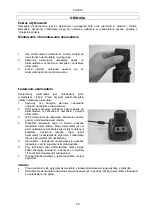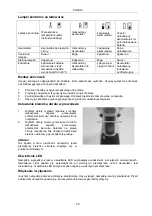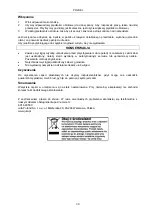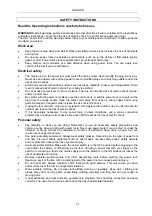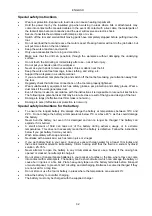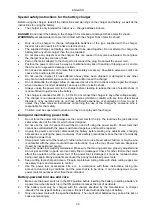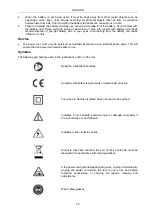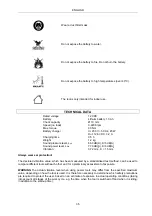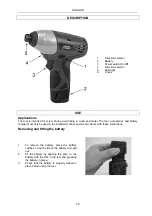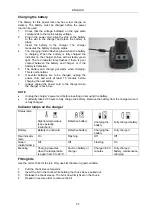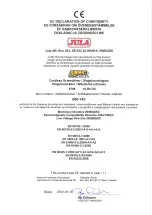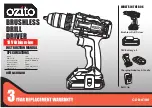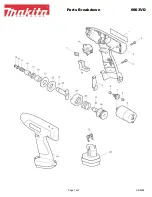
ENGLISH
32
Special safety instructions
Wear ear protection. Exposure to loud noise can cause hearing impairment.
Hold the power tool by the insulated grip when working in areas where bits or attachments may
come into contact with concealed cables. In the event of contact with a live cable, the metal parts of
the tool will also become conductive and the user will receive an electric shock.
Secure if possible the workpiece with clamps, clips or a vice.
Switch off the tool and wait until all moving parts have completely stopped before putting down the
tool.
Do not overload the tool and reduce the motor speed. Pressing harder will not do the job better, but
will put more strain on the tool instead.
Keep the work area clean and well lit.
Only use accessories that are in good condition.
Make sure that the drill can penetrate through the workpiece without damaging the underlying
surface.
Do not touch the bit during or immediately after use – risk of burn injury.
Do not put your hands under the workpiece.
Never use your hands to remove sawdust, chips or debris near the bit.
Keep the work area free from rags, loose clothing, and string, etc.
Support the workpiece in a suitable manner.
If you are disturbed, complete the job and switch off the tool before taking your attention away from
the tool.
Regularly check that all screw connections on the tool are properly tightened.
Wear suitable safety equipment such as safety glasses, ear protection and safety gloves. Wear a
dust mask if the work generates dust.
Even if the tool is used in accordance with the instructions it is impossible to rule out all risk factors.
The following are potential risks that may be incurred as a result of the type and design of the tool.
Damage to lungs (if effective dust filter mask is not worn).
Damage to ears (if effective ear protection is not worn).
Special safety instructions for the battery
To ensure the longest battery life, always charge the battery at temperatures between 18°C and
24°C. Do not charge the battery at temperatures below 0°C or above 40
Ԩ
, as this could damage
the battery.
Never burn the battery, not even if it is damaged and can no longer be charged. The battery can
explode if it is burned.
A small amount of fluid can leak out of the battery during extreme usage, or in extreme
temperatures. This does not necessarily mean that the battery is defective. Follow the instructions
below if you get battery fluid on your skin.
Wash immediately with soap and water.
Neutralise with a weak acid, such as lemon juice or vinegar.
If you get battery fluid in your eyes: rinse your eyes with clean water for at least 10 minutes and
then seek medical attention immediately. Inform nursing staff that the fluid is a sodium hydroxid
solution, 25–35%.
Never attempt to open the battery in any circumstances. Never use a battery if the casing has
opened or cracked, nor attempt to charge it.
Do not store or transport spare batteries in your pocket, a toolbox or the like, where they can come
into contact with metal objects. The battery can be short-circuited, which can damage the battery or
cause burn injuries or a fire risk. Place heavy-duty tape over the battery terminals before transport
or waste disposal, to prevent short circuiting and discharging. Batteries become discharged if they
are not used for a long time.
Do not store or use the tool or battery in areas where the temperature can exceed 40
Ԩ
.
Allow the battery to cool after charging.
The battery must only be charged with the supplied charger.
Summary of Contents for 060-143
Page 39: ......











